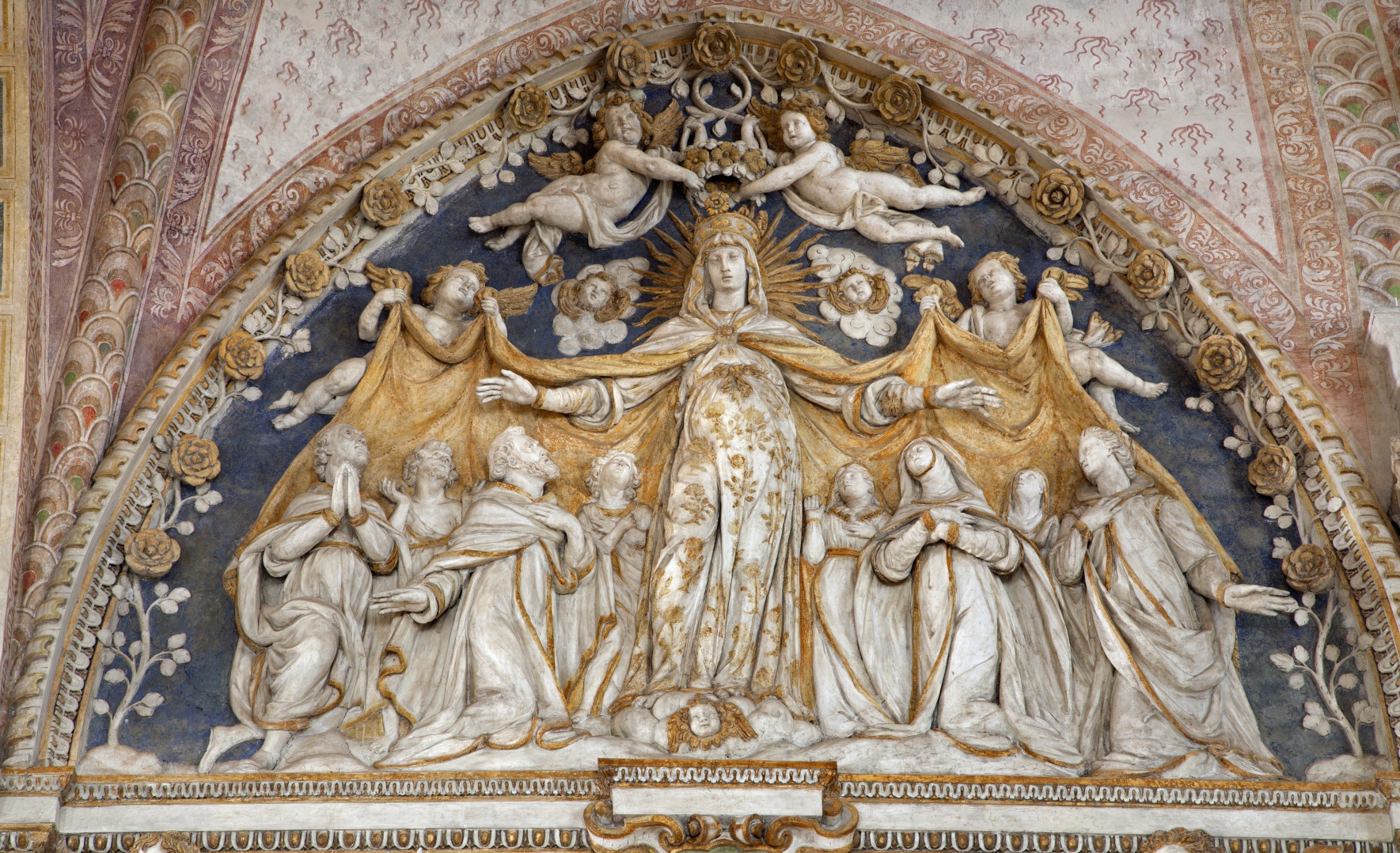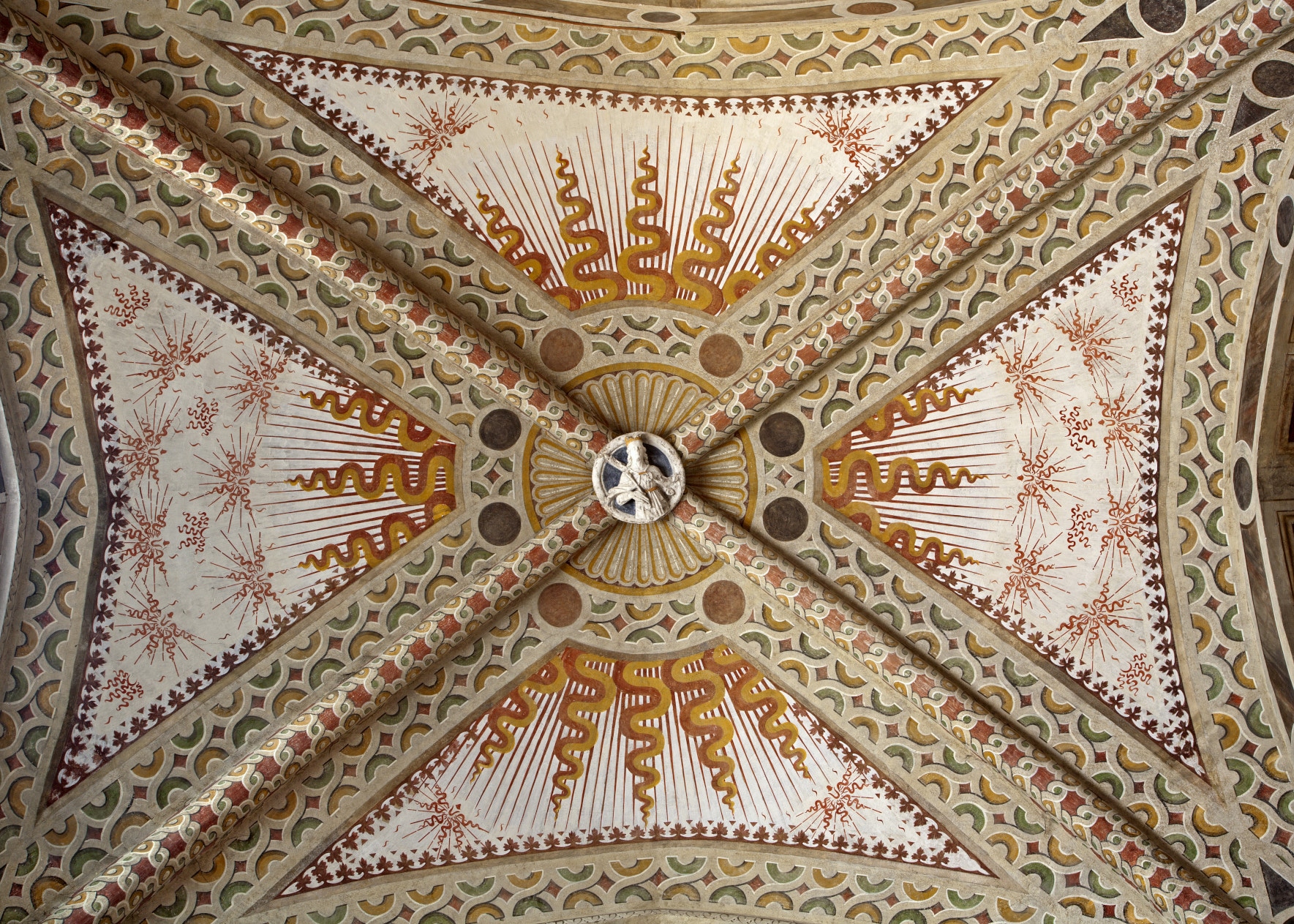Of all the churches in Milan, Santa Maria delle Grazie is one of the most inspiring. It is a blend of Gothic and Renaissance styles created by Guiniforte Solari and Donato Bramante and was built on the site where a chapel with a fresco of the Madonna, known as Madonna delle Grazie, once stood.

Church of Holy Mary of Grace- Chiesa di Santa Maria delle Grazie, 1497, Milan, Italy, home of the famous Cenacolo from Leonardo da Vinci.
The construction of the church, which was designed by Guiniforte Solari and commissioned by the Dominican Order, was started in 1466, when the adjoining Monasterywas practically finished, and completed in 1490.
Shortly afterwards, however, Ludovico il Moro, who was very fond of this church, decided to modify and enlarge it with the intention of creating a memorial to himself and his wife, Beatrice d’Este. After the original presbytery and apse were demolished, Bramante began constructing the magnificent tribune which consisted of a great cube with three apses and a marvelous decoration ofroundels alongthe bands of the base, with Sforza coats of arms and medallions in marble, and men and women Saints attributed to Amadeo in the upper portions. Within the tribune rises the polygonal drum with mullioned windows and a graceful gallery supporting the dome.

Interior view of Basilica Santa Maria delle Grazie in Milan, Italy. The famous Dominican convent is a UNESCO World Heritage Site.
In 1497 Beatrice d’Este was buried in this church but, on account of the tumultuous political situation at the time he died, Ludovico il Moro could not be buried beside her and the statues by Solari for their tombs are now in the Charterhouse of Pavia.
From 1558 to 1782 the Tribunal of the inquisition had its headquarters in the monastery. In 1934-37 the whole building was consolidated and restored under the direction of the architect Piero Portaluppi, thanks to the generosity of the senator Ettore Conti, who then also fmanced the 1947 renovations made necessary after the serious damage done to the Refectory of the Monastery and the main body of the Church during the 1943 bombings.

The interior of the church of Santa Maria delle Grazie. where can be found famous fresco of Leonardo da Vinci Last Supper.
The low, wide façade is in traditional Lombard style. It is divided vertically by pilaster strips and has four Gothic windows in the lower part and round windows (oculi) in the upper part. The marble porch in the form of a shrine, which is supported by two columns and pillars, is by Bramante. In the lunette ofthe arch overhead is a fresco by Michelangelo Bellotti (1729). Along the right side of the church are pairs of ogival windows with round oculi set between the points of each pair.
Santa Maria Delle Grazie: The Last Supper
The Last Supper was painted between 1494 and 1497 within the framework of the major renovation of the Monastery of Santa Maria delle Grazie commenced by order of Ludovico Sforza in 1492. Instead of fresco, the normal Renaissance technique for wall paintings, Leonardo used tempera on a dry wall, which gave him the greatest possible freedom to alter and correct the composition while the work was in progress and enabled him to obtain particular effects of colour. It is, however, partly as a result of this choice that the painting is now in a very poor state of preservation.

Courtyard of church Saint Mary, access to it’s refectory hosting The Last Supper painting by Leonardo da Vinci with trees in autumn colors.

Crucifixion, opposite Leonardo’s Last Supper in the refectory of the Convent of Santa Maria delle Grazie.
Although the Last Supper — a representation of the Eucharist — was a subject traditionally depicted in the refectories of monasteries, especially in Florence, Leonardo took a radically innovative approach with marked accentuation of the dramatic elements of the scene.
Christ’s announcement to the disciples that one of them will betray him causes reactions of shock and astonishment, typical instances of the ‘motions of the mind’ that Leonardo investigated with such interest in his studies. In a setting of extraordinarily exact perspective, which seems to suggest that the scene is taking place inside the refectory of the Dominican monks in Milan, colour is used to define the effects of the light entering both from the three windows in the background and from the real one in the room.
Previously distorted by attempts at restoration carried out over the centuries, Leonardo’s original painting has now emerged as a result of the work begun in 1978 and completed in 1999. This involved This involved addressing complex problems as regards not only the painting itself but also the environment of the refectory in order to protect the work from the dust, fumes and humidity identified as the primary causes of its constant deterioration.
Tours & Tickets for your Visit:








